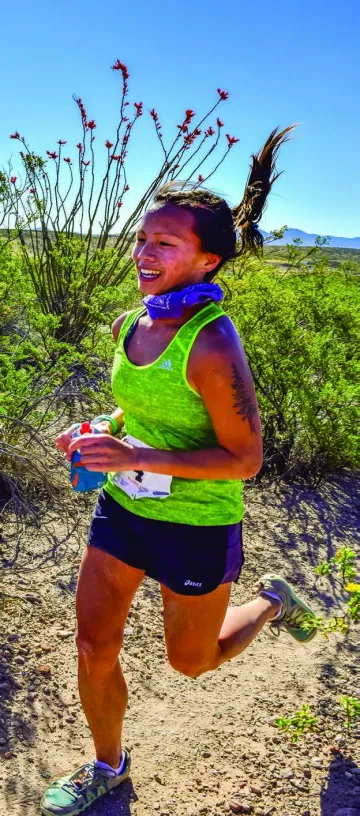Growing Through Failure: Lessons Learned On The Trail
Emily Bushouse
Like many other runners, I have endured the ‘pain cave,’ where at mile 40 of an ultramarathon, my legs feel like bags of sand, my stomach is doing back flips, I’m breathing like Darth Vader, and my confidence is in a heap on the side of the trail 15 miles back. I don’t know if I can do this. But here’s the thing: I am not special. I am just like every other person in the running community who is trying to work through fear, vulnerability, and doubt to reach the finish line.
If I dig deep into my bucket of courage, I can capitalize on these uneasy feelings in order to learn something about myself, hanging on until the possibility of failure doesn’t seem so scary anymore. This is where the magic happens.
The same is true for most growth opportunities in life. Facing challenges head-on is the best way to learn from our experiences, even those that result in failure. The more we practice working through something difficult, the better we get at navigating it.
Carol Dweck coined the term "growth mindset" to capture this idea, that we develop our abilities through effort and dedication to learning. When we are committed to growth, we understand that failure is a necessary part of the process by which real learning occurs. We fail time and time again, learning from our mistakes until we figure out how to solve a problem. When we adhere to a fixed mindset, on the other hand, we view our ability as unchangeable and believe intelligence is something we’re born with. We are afraid to make mistakes and decide that not trying is better than trying and failing.
The key to success is finding the courage to try, even when it opens the door to failure. At the SALT Center, we help students adopt a growth mindset by challenging them to change their thinking patterns. We push students to:
…value the process over the outcome
FIXED: “If I can’t understand, I must be stupid.”
GROWTH: “I will ask questions until I understand.”
…learn from failures
FIXED: “I failed, so I must not be smart enough to figure this out.”
GROWTH: “I failed, but I’ve learned what to do differently next time.”
…reframe failures in terms of “yet”
FIXED: “I’ve always been bad at it, so I’ll probably always be bad at it.”
GROWTH: “If I practice every day, I know I’ll get it eventually.”
…change the strategy, not the goal
FIXED: “I couldn’t finish the race, so I’m giving up.”
GROWTH: “I will figure out another way to approach this goal.”
Growth mindset requires courage and challenges us to view learning as an opportunity to explore our own pain caves. We all have aspirations we’re scared to share because we’re afraid we won’t succeed. Failure is uncomfortable and can be embarrassing, but it is a critical part of growth and learning. Unless we change our mindset and choose to value all parts of the learning process, we remain stagnant. As Brené Brown puts it:
“You can choose courage or you can choose comfort. You cannot have both.”

Photo courtesy of Kerry Whelan/GoatOGRAPHER

